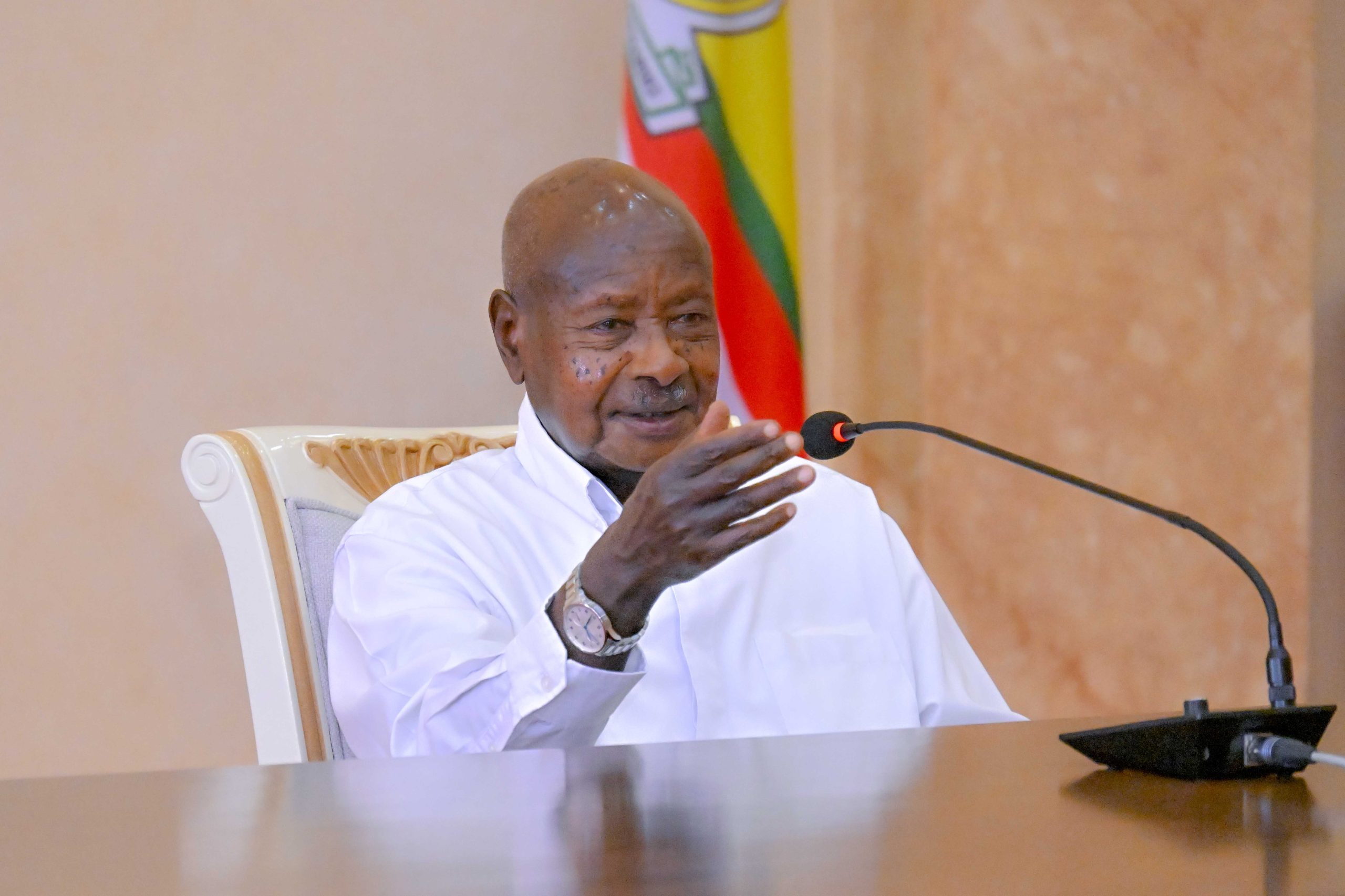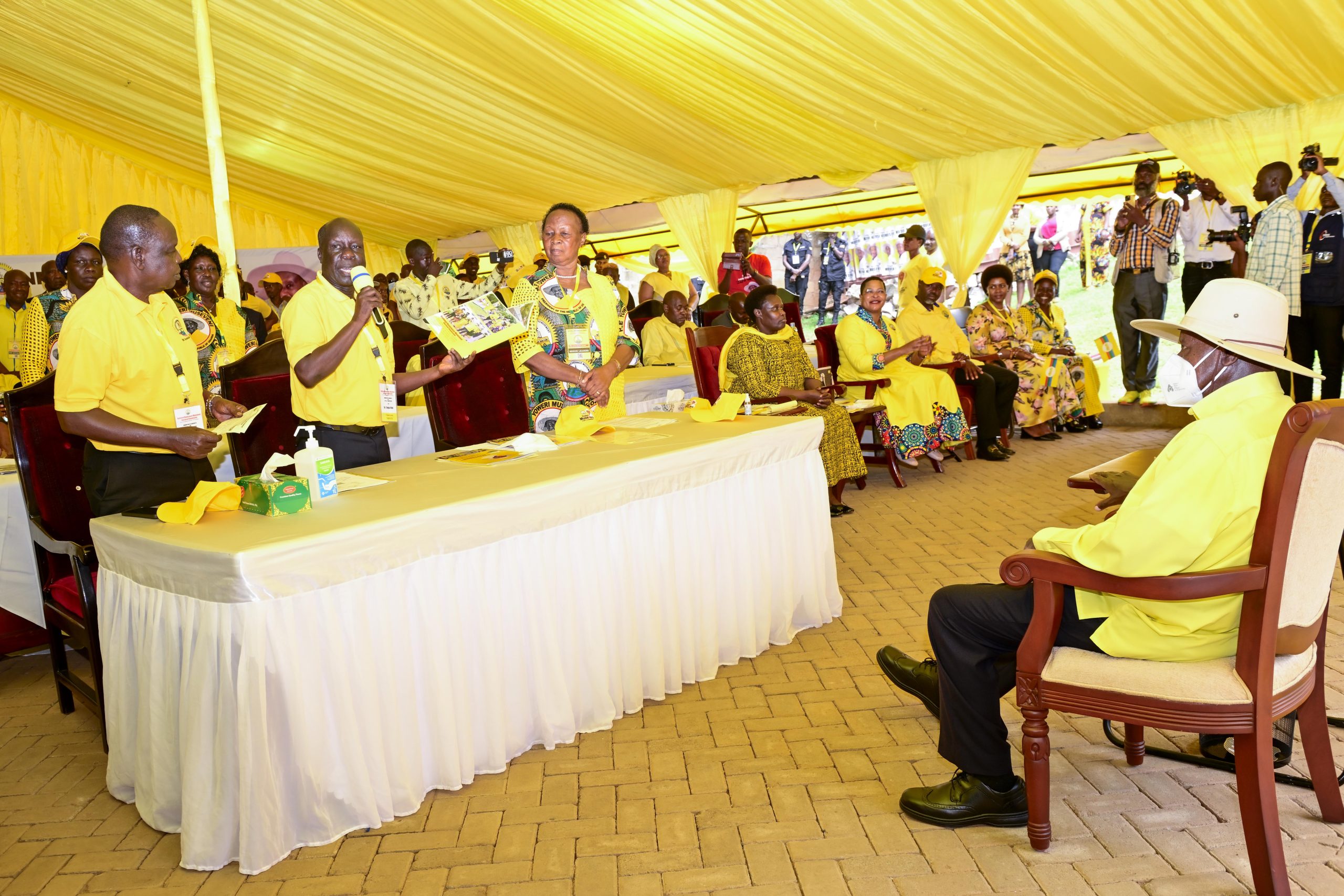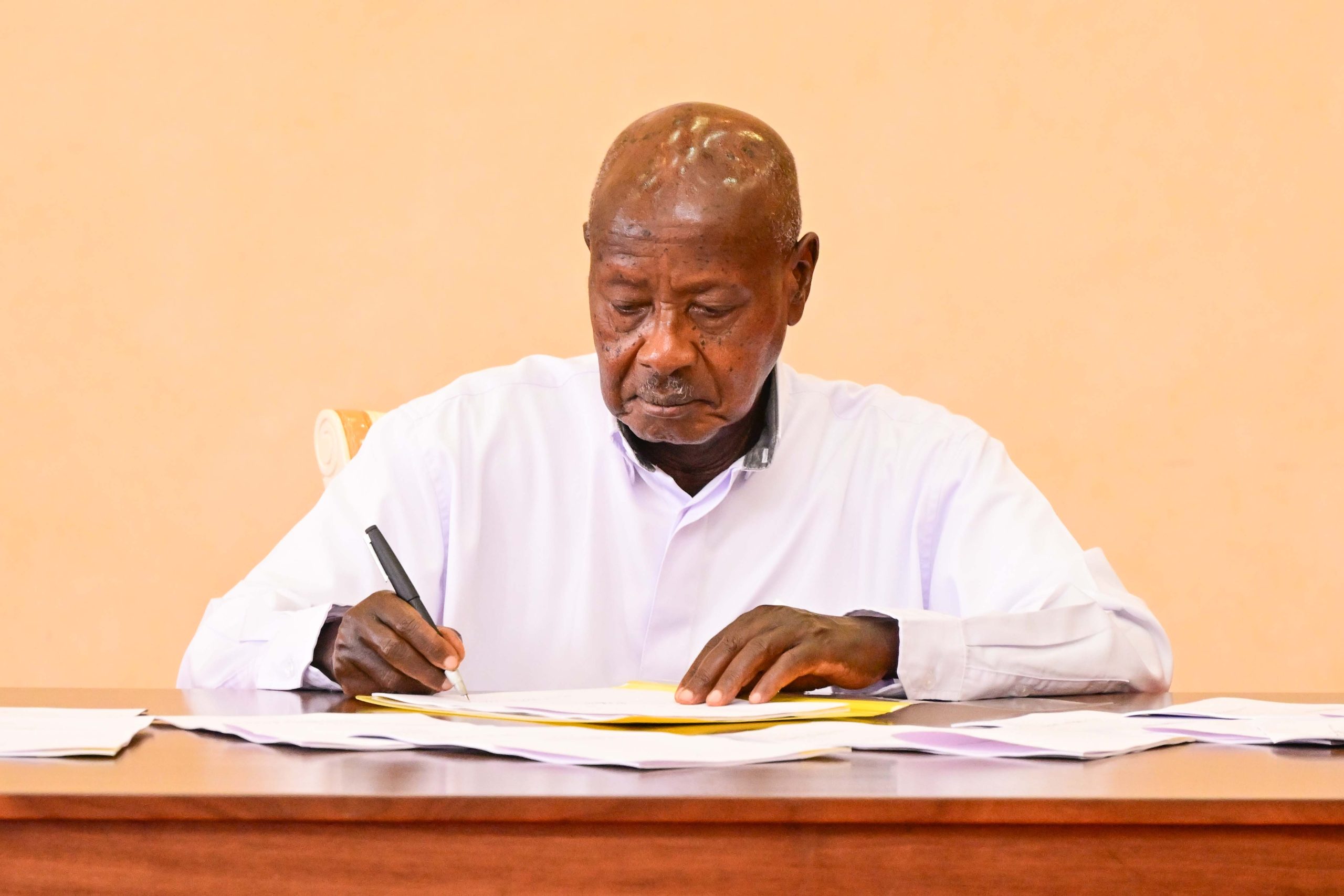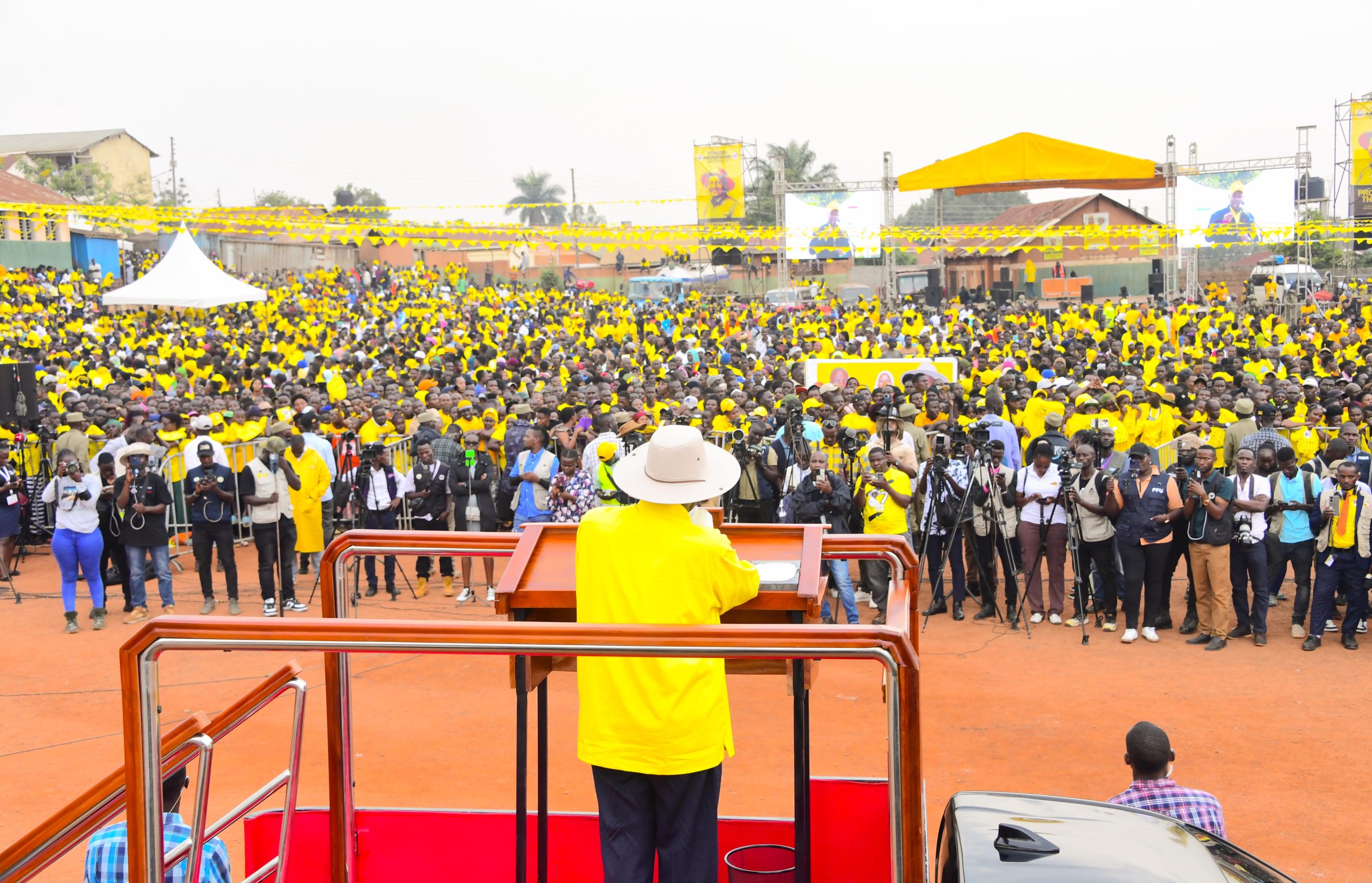Fellow Ugandans, especially the Bazzukulu, greetings.
It says, in the Church of Uganda Prayer Book, page 30 that “Balekanga bye basaanidde okukola nebakola byebatasaanidde okukola, n’amazima tegali mubo.” – “they left undone what they ought to have done and they did what they ought not to have done and there is no truth in them.”
The sustained lies about the policy of the rationalization of the parasitic Agencies that are also irrational, follow that logic. Some of these Agencies were started under the Govt of the NRM when the economy was down, and the Public Servants were all being paid low salaries.
Since some People respond to only the mercenary logic of only working hard for personal remuneration such as pay, we tactically agreed that some Govt efforts could be executed outside the Departmental Structures of the Govt with the workers there paid higher salaries than those in the Govt Departments. That is how Uganda National Roads Authority (UNRA -2008), National Agricultural Advisory Services (NAADS-2001), Uganda Coffee Development Authority (UCDA-1991), etc., came about.
Diary Development Authority (DDA) had started in the year 2000. However, true to their Mercenary nature, they did not fulfil the targets of the NRM Govt, especially the third NRM principle of Social- economic transformation- involving all homesteads into the money economy.
Indeed, by 2013, a whole 68% of the Ugandan homesteads were still outside the money economy. That is why I had to launch Operation Wealth Creation (OWC) – using the Army to distribute the coffee seedlings as well as the other planting and breeding materials to the farmers.
If UCDA and NAADS were successful, why were 68% of the homesteads still outside the money economy by 2013? OWC did much more work than NAADS and UCDA and CDO combined.
In the Masaka area, Col. Nsamba, has distributed 1,000,074, coffee seedlings and caused the planting of 38,666.6 acres of coffee. OWC also gave out other planting and breeding materials: tea, fruits, pigs, cassava, etc., etc. That is how, for the first time in the history of Uganda, the number of the households in the money economy, is now 67% and those outside the money economy are 33%.
Long live OWC. However, OWC also started having issues. Complaints started coming in of: begabira bbokka (they only give seedlings or materials to only themselves); bagaba bifu (they give poor quality materials); they are, moreover, overpriced; they also bring materials out of time; etc., etc.
These same accusations were, of course, more amplified during the time UCDA, NAADS, etc., were the sole actors in the field. That is how and why we came to PDM – let the People in the parish organize themselves, we give them Govt soft money and they buy for themselves the planting and the breeding materials and let the Emyooga, at the Constituency level, deal with the other skills and activities – some of which are not agricultural.
PDM appears to be a big success where it is well implemented, although the PDM people sometimes use the money to do produce buying, etc. It is the first low interest, mass credit, the Ugandans have ever had.
It is, therefore, fraudulent for NAADS, UCDA, etc., to claim that the big boost in Agricultural production is because of their efforts and that if they are not there, production will suffer.
In the Kisozi area, my staff Nalwanga and the earlier ones Kakwenzire and Balemuzi, are the ones who promoted not only coffee growing, but also bananas, fruits, dairy, etc.
I am the one who promoted the massive dairy production in the cattle corridor – all the way from Bukanga (Isingiro) to Karuma in Kiryandongo district. My dairy cattle evangelism would have reached the Karamoja border if leaders were humble enough to learn new things.
I have been bringing delegations from all over Uganda to learn from the success in the cattle corridor to Rwakyitura, Kisozi, Nyakaana, Mrs. Kizza of Masaka etc. It is only Speaker Anita Among who promptly copied my example of cattle rearing when she visited me at Kisozi. She has now more than 1000 cattle.
It is, therefore, shameful to hear of a group known as DDA saying that without them, the dairy Industry will suffer. Before I intervened in 1966 and, later on in 1989, what was the production of milk in Uganda? 200 million litres per year. What is it now? 5.3bn litres per year.
Who brought the milk processors? It was my efforts in spite of so much opposition by all sorts of People. One milk processor from Thailand withdrew when Margaret Muhanga made an irresponsible remark that Govt had sold the little Bugolobi milk plant for USD 1. Eventually, I managed to get the SAMEER milk processing company that introduced the processing of milk to powder, which would enable our milk to reach distant markets.
Otherwise, the only other contributors to the milk Revolution in Uganda, are: Mzee Mbiire of Kashaari, who, by 1963, had good fresian cattle, Vice President John Babiiha who imported some fresian cattle from Canada in 1968, some few farmers in Busheenyi (Mukaira, Kekuruutso, Kikuuri, Ntobotobo, Bashaasha, etc.); few farmers in Kashaari (Rwakanuuma, Kabunduguza); a few farmers in Ibaanda (Rutehenda, Kafuniza, Katafiire), one farmer in Nyabushozi (Rubabinda); one farmer in Kamuli (Mzee Kaisa), etc.
Even with those scattered cases, it was thought that exotic cattle were so complicated that the indigenous traditional cattle keepers, could not manage them. It is us who dust-binned that nonsense and made dairy-farming a mass effort by almost everybody who was a cattle keeper.
With all these breeding and planting materials, the crucial actors are the following:
- The Govt Scientists and Research Centres that develop the improved seeds and breeding stock- Kawanda, Namulonge, Kituuza, Serere, Karengyero, Rwebitaaba, etc. The high yielding clonal coffee seeds were developed by our late Minister – Dr. Sebunya Kibirige; not the irrelevant and opportunistic UCDA and NAADS; this is why I insisted on paying Govt Scientists well.
- The next crucial actors are the socio-economic reformers that detect a useful enterprise developed by the scientists and promote it in the population, with ekibaro (cura), so that it causes positive changes; here, we remember the Uganda Company that introduced cotton in 1903, some missionaries like Robert Carr whom I saw promoting tea in Buhweeju in 1965, John Babiiha who introduced the dairy cattle in 1968, the NRM that has been promoting PFA ever since 1989;
- A stable Govt that ensures peace and oversees regulation – quality control through UNBS, UCDA, DDA or directly through desks in the Ministries or any other formula the State authorizes.
In colonial times, they were misleading our People by talking of a few cash-crops such as coffee, cotton, tea and tobacco and categorizing all the other agricultural products as subsistence (kulya kwokka, tic me ic keken).
I salute Viky Ssekitoleko, who assisted me to debunk this confusion. Now, cash and food products are the whole spectrum of agricultural production as follows:
- Bananas
- Maize
- Fruits
- Cassava
- Vegetables
- Tea
- Tobacco
- Irish potatoes
- Milk
- Beef
- Fish
- Piggery
- Cocoa
- Cotton
- Sweet potatoes
- Vegetables
- Flowers, etc., etc.
Is it rational to have an Agency or Authority for each of these? This is why we had to have a rationalization- stop irrationality and be rational.
To be condemned, are those who I hear try to bring in the nonsensical tribalism. When Katikkiro Mayiga joined us in promoting coffee, we welcomed him. However, as OWC demonstrated, we were already moving. Indeed, OWC started by distributing planting and breeding materials in the Luwero Triangle to the families of the bush war Secret committees, the elected Resistance Councils of Katamba and Kasozi, the guides, etc. That is why we had the following commanders:
- Makulubita – Semuto – Col. Kalyowa
- Kapeeka— Semuto, Nakaseke -Col. Kaddu & Brig. Byuuma
- Masulita— Gombe, Kakiri, Namayumba –Busunju – Brig. Ssegamwenge
- Lwamata—Bukomero- Kiboga- Col. Mulaalo, etc.
It is, therefore, sheer dishonesty, to bring up tribalism where the NRM is involved. The massive industries the NRM has built, are mainly in Buganda – Namanve, Mukono, Kapeeka, Matugga- Gombe area, Luwero Industries in Nakasongola, Kisozi, etc. These have direct benefit to nearby populations if they are well guided to take advantage of them.
A litre of milk in Rwakyitura, when the prices are good, gives me shs 1,050; in the Kampala- Wakiso area, a litre of milk, goes for shs 2,000. What causes the difference? The proximity to the huge commercial and Industrial centre of the Kampala- Wakiso Mukono area.
Who has rehabilitated, re-oriented and expanded this commercial –Industrial zone after the mistakes of the 1960s-70s and 1980s? It is the National Resistance Movement leading the positive minded People of Uganda.
Therefore, the negative chauvinists, stop deceiving our People. With the coffee, it is the NRM that revived and expanded its production as it did for all the other products enumerated above.
If there are problems like the one with tea now, we shall sit with the stakeholders, discuss and get solutions, using rational solutions. Long live the rationalization.
The USD 900 million from the 9 million bags of coffee we are exporting, up from the 2 million bags of 1986 is, first of all, thanks, to the NRM that provided security for the scientists, as already pointed out above, to improve the seeds and the security in the Country.
However, this USD 900 million is mere peanuts because we are still exporting the unprocessed coffee beans. With value addition- roasting, grinding and packing- we shall earn, maybe, 15 times more from the same quantum of raw materials. Check with Tugume of Ntungamo.
I have told you before, that the global coffee value is USD 460bn. Africa gets only USD 2.5bn of this. Why do some actors appear to be satisfied with this? I am not satisfied with USD 900 million.
Every time a coffee bean is sent to Hamburg in Germany, it takes out of our soils some potassium, phosphorous, calcium, magnesium, silicon and sodium. We need a better return for this continuous mining and export of our nutrients.
Why should Germany earn USD 65bn from coffee and all the coffee growing countries only earn USD 25billion?
We are checking whether the anti- rationalization crusaders may not be on the payroll of some external forces, apart from the other confusions on their part.










